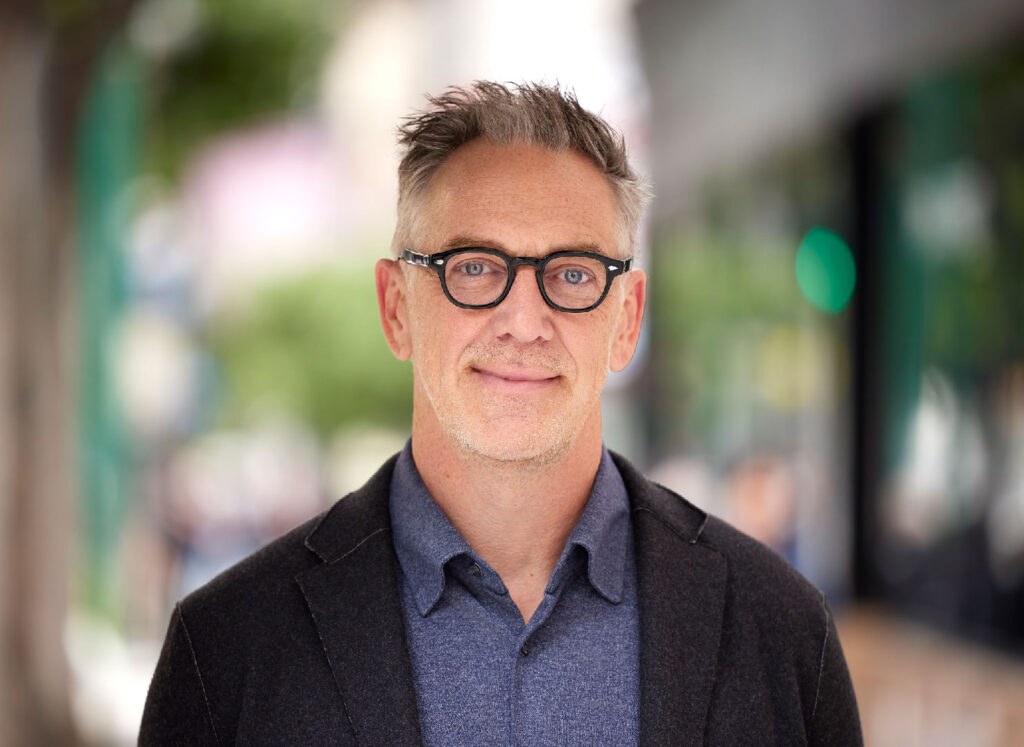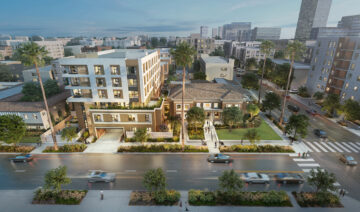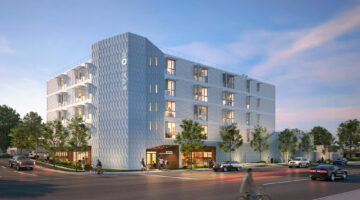
Architect: Mark Oberholzer, a principal at KTGY, in downtown
Over the last few years, as Los Angeles has seen a surge in unhoused individuals, there has also been a greater push from the city to address the housing crisis and get those individuals off the streets.
“It’s difficult to go anywhere (in Los Angeles) without seeing significant homeless encampments,” Mark Oberholzer, a principal at KTGY, a downtown-based architecture firm which specializes in neighborhood revitalization and sustainable design, said.
“When you see that, it really kicks a kind of groundswell of ‘hey, we have to do something about this,’” he said.
Since joining the firm in 2015, Oberholzer has noticed a change in the company’s expertise, illustrated by a rise in affordable housing projects the company has chosen to undertake.
KTGY’s portfolio has active projects located throughout downtown, Koreatown, Pasadena, Inglewood, South Bay and the Westside – all neighborhoods that have significant homeless populations.
According to a recent count released by the Los Angeles Homeless Services Authority, an estimated 76,000 people experience homelessness on any given night in Los Angeles County, up 10% from last year.
“I think we all know that Los Angeles is facing a housing crisis,” Sonnet Hui, general manager and vice president of Project Management Advisors Inc., a Chicago-based real estate consultant firm which specializes in development and property management, said.
“And I think it’s showing up in many different ways,” Hui said. “One of which is we’re seeing an increase in people being unhoused because they simply cannot afford to live in the city.”
These increases have exposed the relationship between the number of unhoused individuals and the state of Los Angeles’ housing production and overall unaffordability. As a result, the city and state have released a number of incentives in order to promote the development of new 100% affordable housing.
Developer’s incentive
 Rendering: 711 New Hampshire will be six-story, 95-unit permanent supportive housing development in Koreatown.
Rendering: 711 New Hampshire will be six-story, 95-unit permanent supportive housing development in Koreatown.
In order to streamline the development of new affordable housing projects, the city and state have passed various forms of legislation, with the goal of encouraging developers to make building new affordable housing a top priority.
So, what’s in it for developers?
Of the many regulations offered, one of the most recent ones is Mayor Karen Bass’ Executive Directive One, or ED-1, which was originally issued Dec. 16 and revised on July 7.
ED-1 states that applications for 100% affordable housing projects – which are defined as multifamily complexes with restricted rent as calculated by the city’s median income level – are exempt from discretionary review processes otherwise required and must be expedited, all with a purpose to “aid in swiftly sheltering people who are unhoused in the city of Los Angeles.”
“I think the appeal is always financial with developers,” Hui said. “Time is money in the development world.”
Another important thing for a developer is to be able to maximize development potential. Or in other words, to be able to generate as much revenue as possible.
“Most clients who come to us want to know, ‘what can I do with this site?’,” Oberholzer said. “And oftentimes, if they’re experienced, they may have an idea already so sometimes we’re confirming what they think is true. Other times, we’re really saying, ‘well here’s what you could do. Here’s a couple of options.’ There are so many ways in which you can think about projects in different ways.”
Assembly Bill 2334, which is a state-wide incentive, allows for increased density bonuses and added height to 100% affordable housing developments.
“More height equates to more units and to more income in the end,” Hui said.
Another assembly bill that has encouraged developers to take on more affordable housing projects is Senate Bill 35, another streamlining initiative.
One of the more attractive components of the bill is the no parking requirement so long as the development meets certain criteria, such as being located within one-half mile of public transit.
“Building parking in the city is very expensive,” Hui said. “You either go above ground or below ground, but if you go above ground, it impacts (the development potential) because every project has a height limit. The fact that some of these assembly bills require no parking or less parking is a financial incentive to a developer.”
Oberholzer said this opens the door for small-site developments.
“On small sites, the cost of building structured parking is extraordinarily expensive,” he said. “Before, I would have this talk three or four times a month with landowners who wanted to develop saying, ‘you could develop, you’re not going to be able to afford it.’ (Now) if you don’t have to have to provide parking, you don’t have to build the podium, you can now afford to do housing.”
Natural growth
With certain requirements loosened in order to make affordable housing projects more feasible, the look of Los Angeles is beginning to change.
“You can absolutely see the change along transit corridors,” Oberholzer said. “Along major transit corridors, you’re seeing a lot more multifamily projects being built of significant size. La Cienega, West Adams … I mean all over this city, you see the impact over time, really starting with, I guess in 2016, the TOC (incentive) and now with these (newer) state and local implementations.”
Oberholzer said the city is returning to the natural urbanism Los Angeles should have experienced and lost out on due to the downsizing efforts that took place in the 1950s.
“If you drive along Franklin Boulevard (in Los Feliz), for instance, you can see some seven-story brick buildings from the early 20th century, which couldn’t be built (again) until recently,” he said. “You’re just seeing a traditional city emerge, just like it would have, which to me is exciting.”
He said the growth must come in all forms of new housing and it’s important that architects embrace affordable housing.
“Being involved with affordable housing is important if you’re an architect in Los Angeles because it’s critical. It’s a huge need the city has,” Oberholzer said. “And I think that, at least in my opinion, an attractive city builds through the whole housing spectrum.”
KTGY recently completed Hope on Avalon, the fourth in a series of modular apartment buildings for the homeless. Hope on Avalon, located in the South Bay, is a five-story, 89-unit 100% affordable housing complex, where units range from 320 to 480 square feet.
The firm is designing the redevelopment of the Jordan Downs public housing complex in Watts, which is currently under construction. The transformation of the 14-acre site will create 575 affordable apartment units as well as several for-sale homes.
Another KTGY affordable housing project is 711 New Hampshire, which is an adaptive reuse project of a historic house with the addition of a new building adjacent to the original house. The development, which is currently in the permitting process of approval, will bring 95 units of permanent supportive housing to Koreatown across six stories.
“I think for the second half of the 20th century, Los Angeles was really for a certain kind of citizen, which is not a broad or diverse group of citizens,” Oberholzer said. “And (this growth is) really an acknowledgment that this city is a huge city. There are a lot of people here and it is for everyone.”


